Netflix’s upcoming release of the holiday musical feature film Jingle Jangle: A Christmas Journey (“Jingle Jangle”) will see NYFA alum Francesco Panzieri among the film’s credits as the film’s compositing supervisor. The film was released by the streaming giant on November 13, 2020, release, and audiences are already loving the whimsical film from director David E. Talbert.
Panzieri has had an extensive career since attending NYFA’s 3D-Animation & VFX conservatory program and has contributed to over 20 feature films and 50 television series. Some of his credits include Once Upon a Time…In Hollywood, Star Wars: The Force Awakens, The Fate of The Furious, Avengers: Infinity War, Westworld, and Spiderman: Homecoming to name a few.
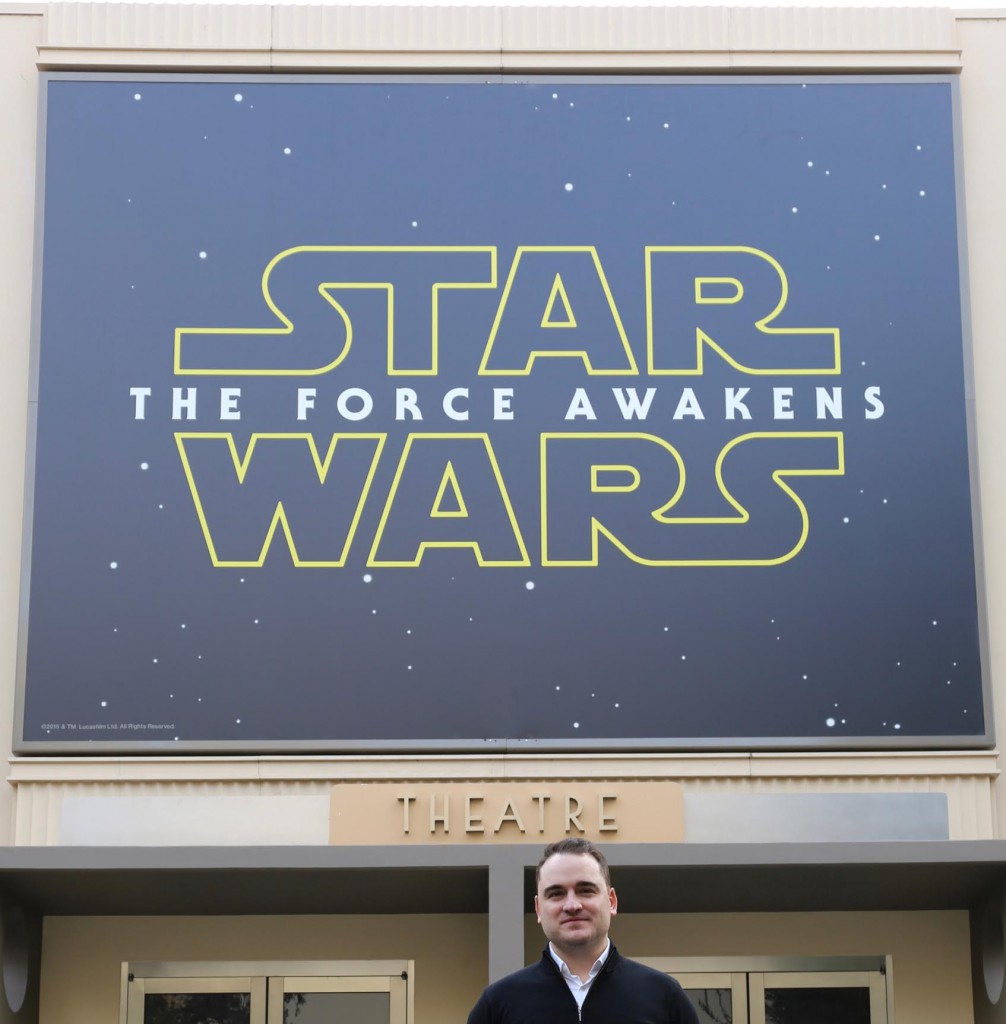
The NYFA alum’s latest work will be featured in Jingle Jangle, a holiday musical by Talbert, starring Forest Whitaker, Keegan-Michael Key, Phylicia Rashad, Anika Noni Rose, and Hugh Bonneville; with songs by EGOT winner and celebrated recording artist John Legend. The film follows a former joyful toymaker (Whitaker) who is rejuvenated in his love of creativity for his craft when his curious granddaughter appears on his doorstep one day.
Panzieri worked as an in-house compositing supervisor for Jingle Jangle, leading a team of artists who completed over 230+ shots of post-visualization since they began their work on the film in October 2019. Once the post-visualization was finalized, Panzieri, along with his in-house visual effects team (INH), moved onto production shots, working from beginning to end on shots that are meant to be in the final cut. Panzieri and his team then completed over 70 shots, spanning from clean-ups to set extensions to color correction to split screens to retime. “The team went above and beyond and everyone on the VFX production side was very pleased with our work,” shared Panzieri.
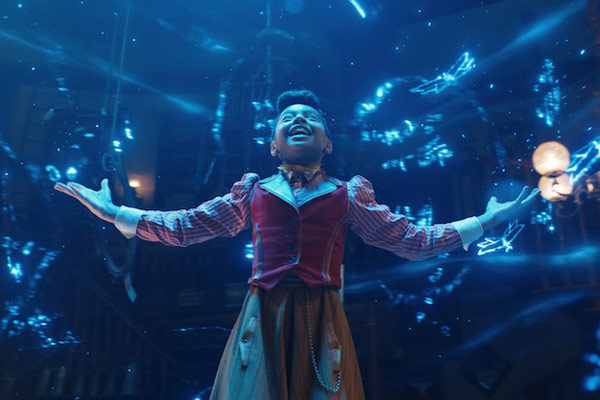
Panzieri had the opportunity to share more about his experience working on the film with New York Film Academy and the process of leading a team as the Compositing Supervisor on the Netflix Film:
“We (INH) spent the first 5-6 months on post-visualization, focusing on the 2nd & 3rd act of the movie, namely the Magic Man G sequence and the Tunnel Escape sequence,” he revealed. “In light of the multiple audience screening tests that were scheduled on our way forward, we did several interactions each time on both sequences depending on the feedback received from Netflix and the audience.
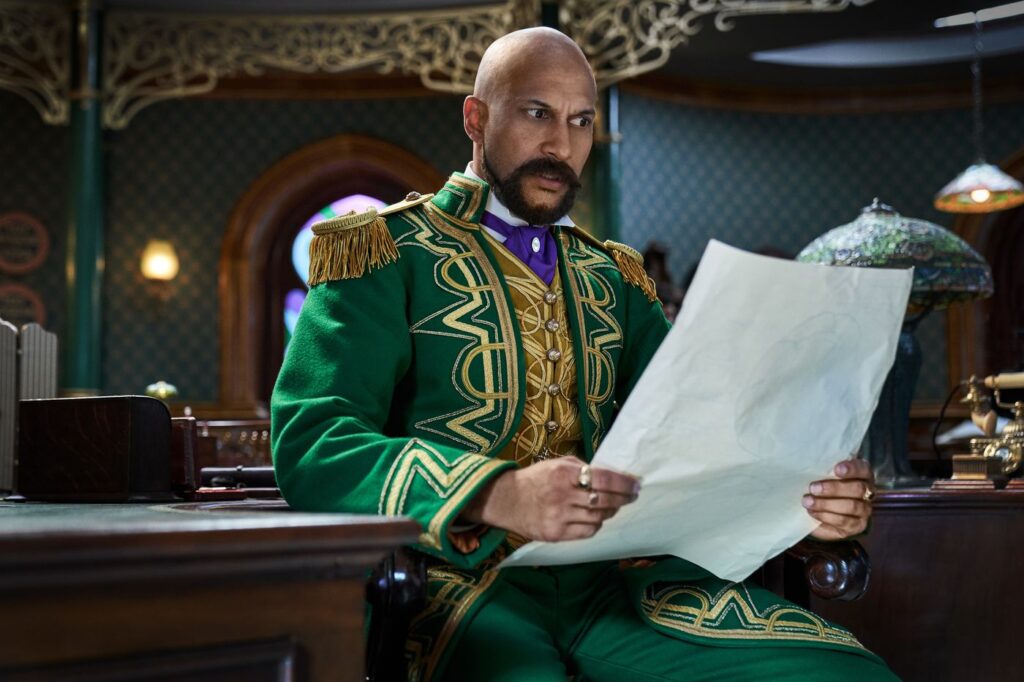
For the Magic Man G (MMG) sequence, we were presented with the cut of the sequence that editors Michael Tronick and Joe Galdo put together. We paid attention to what David E. Talbert was asking us, and animated & composited accordingly the Whirly Twirly to bring flow and life to the sequence, and to connect the choreography of the audience with the flying toy that Gustofson is introducing to them, including the malfunctioning and crash at the end. Once we had a lock on the sequence in terms of animation, timing, positioning, look, we sent our work to Framestore Montreal (one of the several VFX vendors on the show), who dived head-in into the sequence, and started working on it from scratch, using our post-visualization renders as basically blueprints to masterfully build the final visual effects for each shot. The MMG sequence is my favorite part of the movie, with some incredible music, lyrics, and acting/dancing by everyone, especially by Keegan-Michael Key.
For the Factory Escape (FAC), we had to design the entire sequence from scratch.
It was gracefully shot entirely on blue-screen, and it had nothing but the two characters (Journey and Edison) rigged and secured to the wooden chest. INH built the 3D assets for the tunnel, matching roughly the parts that were built on set, and then did all the animation and composites for each shot. On my side of things, I also managed to keep the entire edit of the sequence open separately and literally laying on top of each blue screenshot of our composites, slowly managing continuity and look. That’s where the sequence started coming to life.
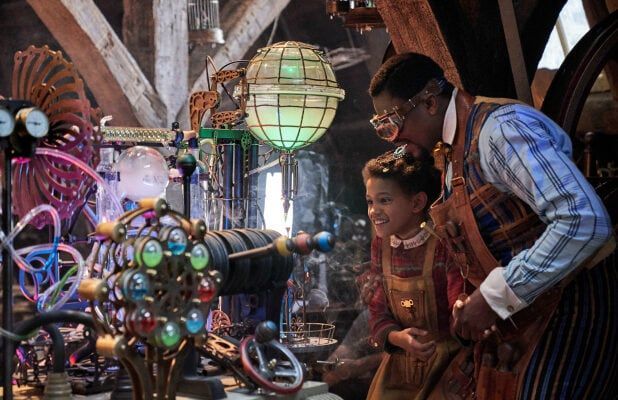
We delivered each draft of the sequence to the editors, they re-arranged things on their side in terms of swapping shots around, adding repos, camera animations, and then sent out the movie each time for the audience screening. Our work was always welcomed warmly during every screening. John Legend and his daughter came twice to the office to watch the movie, and Luna seemed to really enjoy and dig the sequence, so we knew we were on the right path. From there on, Framestore Montreal took our work and once again brought it to final quality with fantastic finesse.
Once we finalized post-visualization (230+ shots), INH moved onto production shots, which means working from beginning to end on shots that are meant to be in the final cut, so the real deal. We completed over 70 shots, spanning from clean-ups to set extensions to color correction to split screens to retime. The team went above and beyond and everyone on the VFX production side was very pleased with our work.
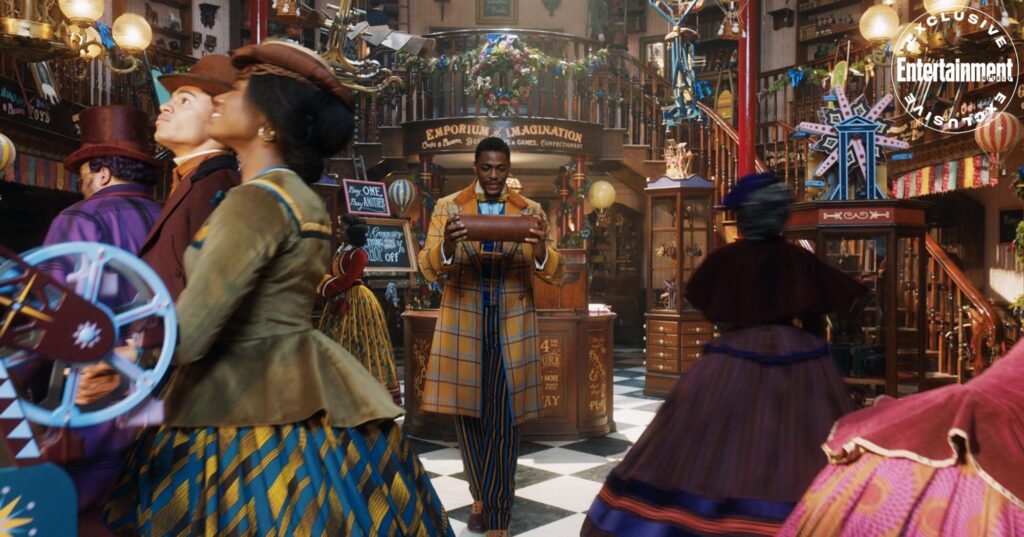
Sadly, Covid-19 hit right as we started working on those final shots, so we had to relocate and work remotely from home for the rest of the project, which meant having so many production meeting prior to leaving the office, in order to make sure everything was planned and taken care of. It was a challenging but stimulating situation to be in, figuring out for example the length of network cables that each artist needed, or testing the internet connection speed for everyone in order to make sure that we could do downloads/uploads and Cinesync reviews in a timely fashion. I was also requested to assist/consult VFX production for the purchase of a workstation for our director David E. Talbert, in order for him to review all the work from home. Production purchased for him exactly what I had advised to them, shipped it to me in order to configure it and set it up with all the necessary software for reviews, and I eventually ended up going to his residence to install it, do a first dry run test with my remote team, and explain David every bit and piece on how to run things properly.
JJ was: photographed with spherical Signature Prime lenses on Alexa Large-Format at full-aperture resolution (4448×3096), worked on at 4k-flat resolution (3996×2160), finished in DI at 4k-UHD resolution (3840×2160). Real 4k movie. Additionally, graded in Dolby Vision and mixed in Dolby Atmos for the most immersive viewing experience.”
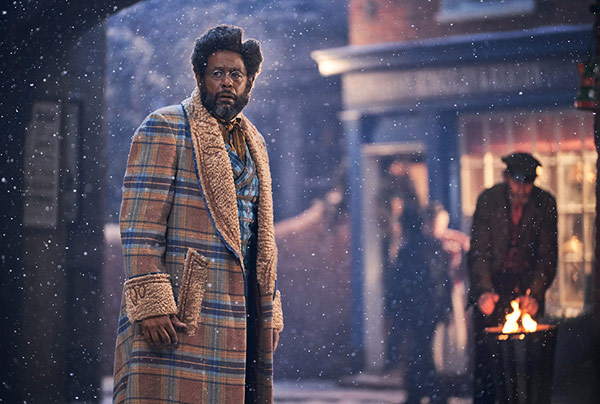
With COVID-19 hitting right as Panzieri and his team started working on the final shots, like many companies, they had to relocate and work remotely from home for the rest of the Jingle Jangle project. With the new change of scenery, Panzieri was requested to assist/consult VFX production for the purchase of a workstation for the film’s director, David E. Talbert, in order for Talbert to review all the work from home, to which Panzieri himself implemented in the director’s home successfully with the help of his remote team.
“Working on this film was an amazing experience that allowed me to learn so much,” shared Panzieri. “The strenuous teamwork and love that everyone involved in this feature poured into it couldn’t make us prouder. I feel that the final result looks really dazzling, just like a true Christmas movie should look, and I hope that Jingle Jangle will turn into a holiday classic to enjoy with family and friends for years to come for audiences of all ages.”
New York Film Academy would like to congratulate Francesco Panzieri on his involvement in Netflix’s Jingle Jangle and encourages everyone to check out the holiday film when it gets released on Friday, November 13, 2020, and to see why the Magic Man G sequence in Jingle Jangle is Panzieri’s favorite part of the film.